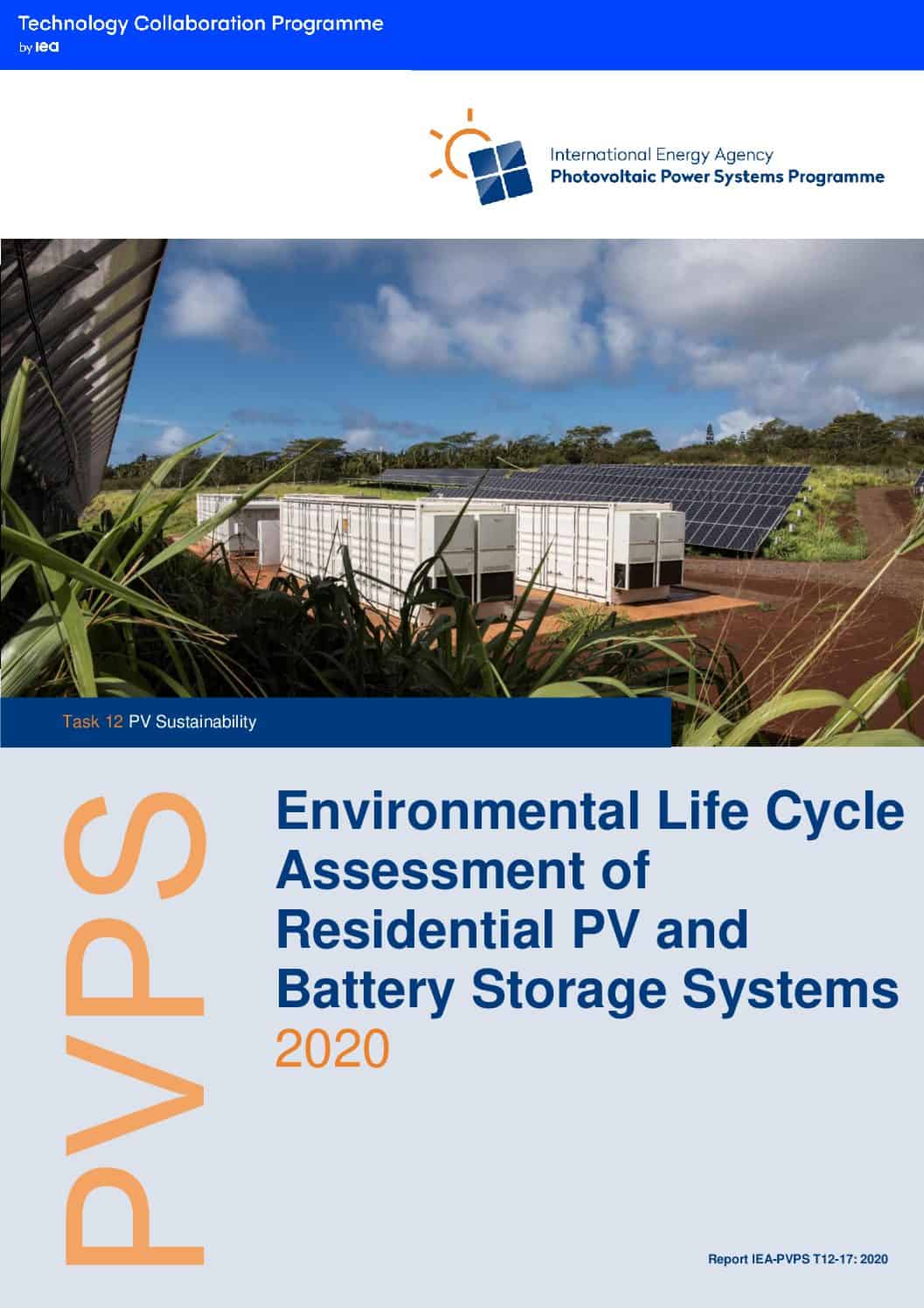Using a life cycle assessment (LCA), the environmental impacts from generating 1 kWh of electricity for self-consumption via a photovoltaic-battery system are determined. The system includes a 10 kWp multicrystalline-silicon photovoltaic (PV) system (solar irradiation about 1350 kWh/m2/year and annual yield 1000 kWh/kWp), an iron phosphate lithium-ion (LiFePO4) battery, and other components such as the control system, battery housing, and two inverters (one for the PV system and one for the battery system). Three options for the AC-coupled system with changing battery capacities (5, 10, or 20 kWh nominal capacity) are investigated.
The environmental impacts are assessed using the indicators greenhouse gas emissions and cumulative energy demand (separated into total and non-renewable cumulative energy demand). In addition, the four most important impact categories for PV electricity—respiratory inorganics (particulate matter), acidification, energy carrier resource use, and minerals and metals resource use—are assessed according to the environmental footprint (EF) method. Data are drawn from the DETEC data DQRv2:2018, recent literature, and product details provided by manufacturers.
The results show larger environmental impacts of PV-battery systems with increasing battery capacity; for capacities of 5, 10, and 20 kWh, the cumulative greenhouse gas emissions from 1 kWh of electricity generation for self-consumption via a PV-battery system are 80, 84, and 88 g CO2-eq/kWh, respectively. The cumulative greenhouse gas emissions of PV electricity consumed directly or fed into the grid are 54 g CO2-eq/kWh. The corresponding total cumulative energy demands are 5.27, 5.40, and 5.50 MJ oil-eq/kWh, with non-renewable energy carriers contributing 1.16, 1.22, and 1.29 MJ oil-eq/kWh. In the investigated EF impact categories, we similarly observe a larger environmental burden with increasing battery capacity, except in the use of minerals and metals.
Our sensitivity analyses show that using a nickel cobalt manganese oxide (NCM) lithium-ion battery, instead of an LiFePO4 battery, leads to a comparable environmental impact in terms of greenhouse gas emissions and cumulative energy demand. However, the NCM battery increases the impact in the EF categories of acidification and respiratory inorganics by 7 and 10 %, respectively, whereas energy carrier resource use decreases by 4 % and minerals and metals resource use decrease by 1 %. Using a copper indium selenium (CIS) PV panel instead of a multicrystalline-silicon decreases greenhouse gas emissions by 24 %, non-renewable cumulative energy demand by 13 %, and particulate matter emissions by 60 % (the largest decrease).
Furthermore, the calculated environmental impacts are sensitive to the assumed battery lifetime. A decrease from 5000 to 3000 charge cycles increases non-renewable cumulative energy demand by 24 % and greenhouse gas emissions by 16 %. Increasing from 5000 to 7000 charge cycles decreases the environmental impacts by 6 % and 7 % in terms of non-renewable cumulative energy demand and greenhouse gas emissions, respectively. A utility-scale battery system case study shows that using batteries to store PV electricity overproduction reduces greenhouse gas emissions compared to using natural gas backup electricity generation.
